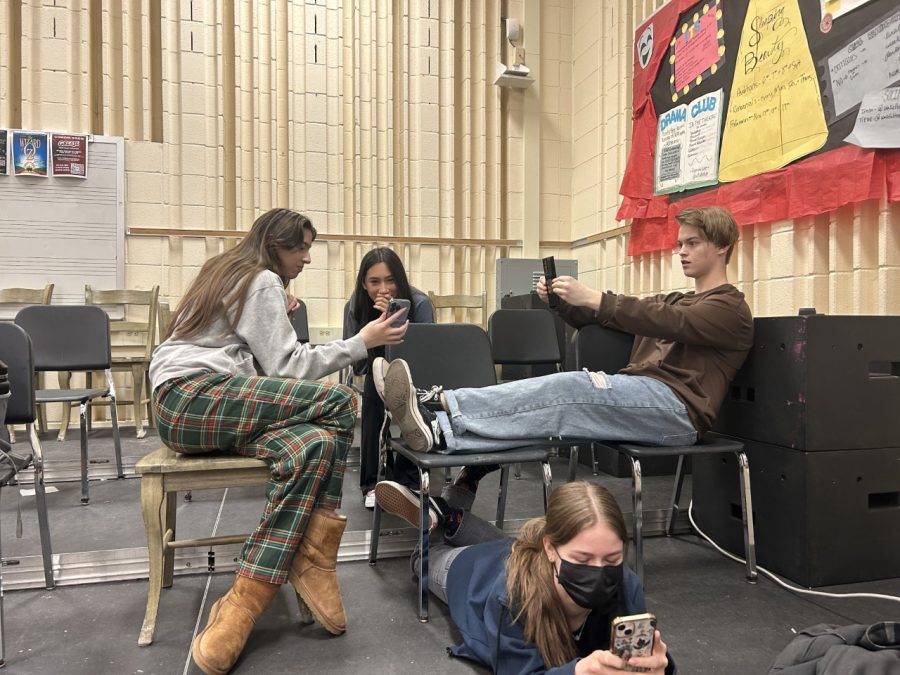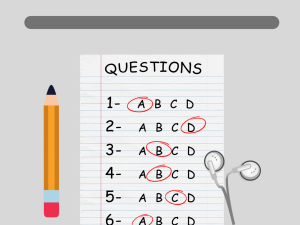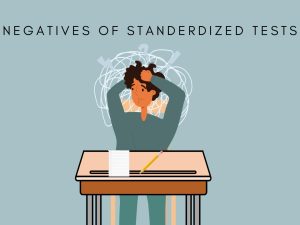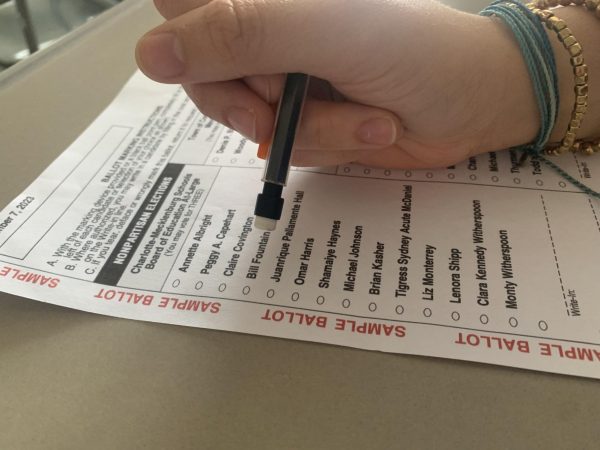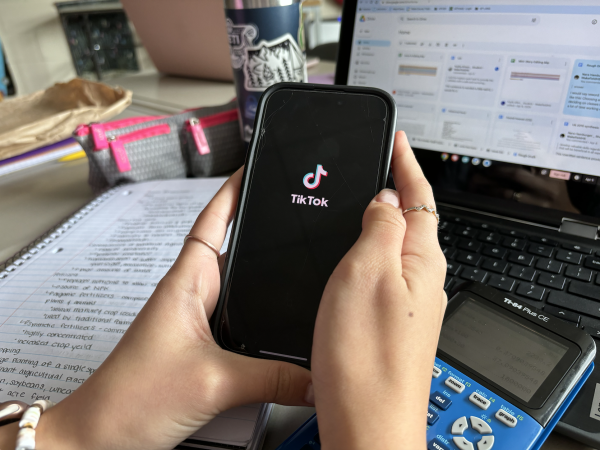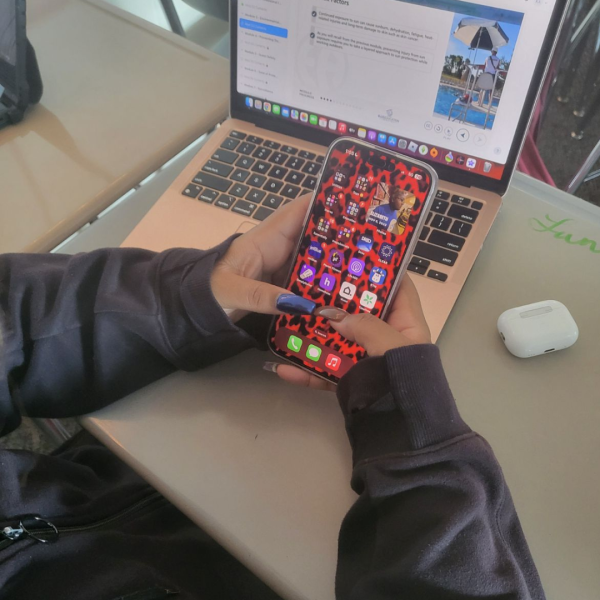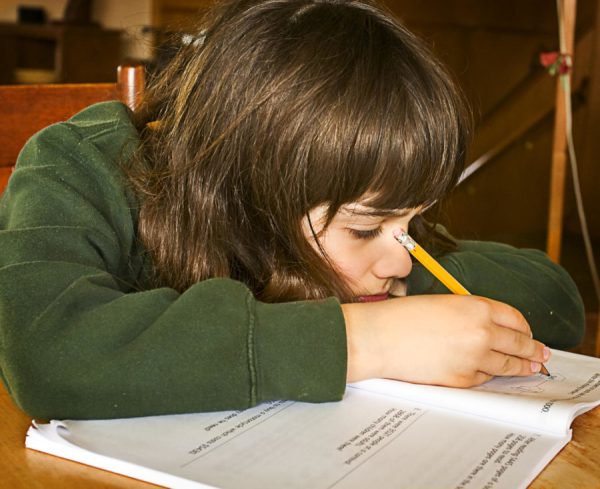Teachers, admin implement new phone policies as second semester begins
Students often spend time on their phones before and after class. Phones are a great way for students to take a break between classes but are expected to be away when instruction begins.
March 2, 2023
On the first day of the new semester, one thing stood out on every syllabus: the phone policy. Each phone policy varies from class to class but it is evident that teachers do not want to see students on their phones. Phone addiction and restrictions are becoming increasingly pressing topics at high schools in the United States.
Whether a teacher takes your phone, tells you to keep it in your backpack or lets you keep it on your desk, phones are only ever supposed to be used to enhance your learning. Many teachers continue to experiment with different methods of enforcement in attempts to figure out what works best.
Chemistry teacher Denise Furr found that when students were told to keep their phones in their backpack, they often got their phone out and would place it in their lap. In an attempt to resolve this issue, Furr came up with a new plan.
“Halfway through class we take a little break and they get 2-minutes to catch up on whatever they need to catch up on, then it goes back in the bucket until the end of the period,” Furr said. “Ninety minutes is a long time to not see what’s going on… if they know that a break is coming [oftentimes] they can last until the break.”
Not only does the break help keep students off their phone, but it also allows students a moment to regroup and unwind.
“It is nice to have [a] two-minute break to feel like I get a second to relax, not think super hard and check on my notifications,” sophomore Tess Burgart said.
Although students are often found reaching for their phones, it’s not entirely their fault. When apps are created, software engineers focus on how long they can get people to stay on them.
“Phones are very distracting,” AP psychology teacher Charles Hensey said. “Most apps are designed to be addicting or have addictive properties to them. It is very hard for anyone to stay off of them because you are drawn to get on your phone.”
Most apps are designed to be addicting or have addictive properties to them.
— Hensey
It’s undeniable that phones have become an issue, but it’s in more ways than we may initially think; a student being on a phone or a teacher instantly taking a phone can lead to a bad first impression.
“I think teachers should have the option to take phones but I don’t think they should start the year off taking them,” sophomore Jake Eisenberg said. “That can start the student-teacher relationship with a negative interaction.”
No matter the policy, phones aren’t supposed to be a distraction to learning. It is essential for students to learn how to be productive in a society surrounded by technology because it doesn’t look like we’ll be saying “goodbye” to phones anytime soon.
“In the real world [they will have their phones], no one is going to tell them to put it away and when to study and get work done,” Furr said. “It is time to start figuring out that balance.”



